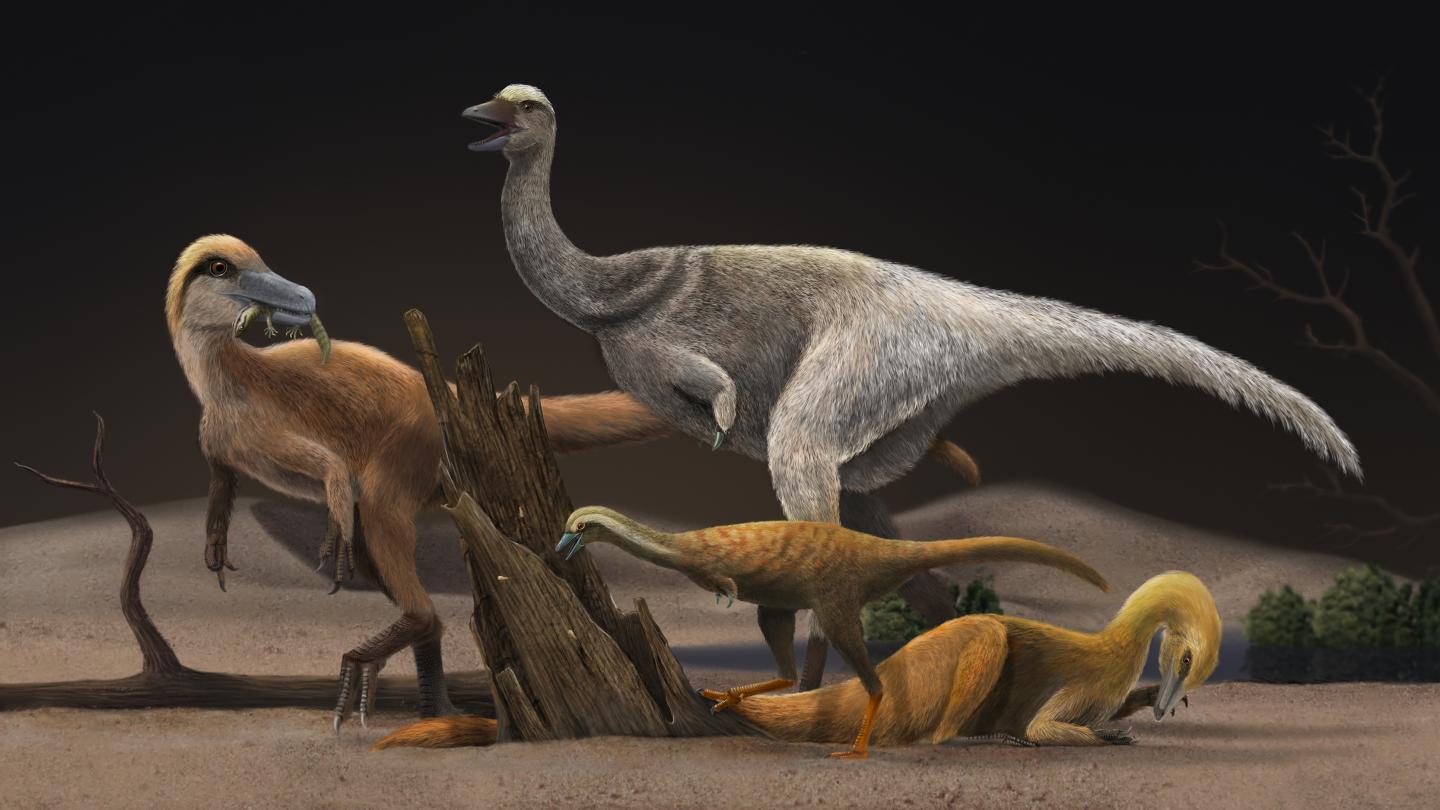Bizarre dinosaurs rapidly shrank to become ant-eaters the size of a chicken
They were originally fierce predators the size of a small ostrich.

A bizarre group of raptor-like dinosaurs, known as alvarezsaurs, drastically shrank around 100 million years ago, transforming from ostrich-size predators that hunted early mammals and baby dinos to ant-eaters the size of a chicken, according to paleontologists.
Alvarezsaurs were slender theropods — a diverse group of two-legged dinosaurs with hollow bones and three-toed limbs, including Tyrannosaurus rex and Velociraptor — that may have been feathered. There are 21 confirmed species of alvarezsaurs dating from between the late Jurassic period around 160 million years ago and the end of the Cretaceous period around 66 million years ago.
In a new study, paleontologists examining the fossils of these dinos have revealed that the group massively decreased in size between 110 million and 85 million years ago. Before this, alvarezsaurs weighed between 22 and 154 pounds (10 and 70 kilograms), but they quickly slimmed down to under 11 pounds (5 kg), with one species shrinking to just 0.3 pounds (0.15 kg).
Related: 7 surprising dinosaur facts
"Size reduction is very uncommon in Cretaceous theropod dinosaurs," lead author Zichuan Qin, a doctoral student at the University of Bristol in the U.K. and the Institute of Vertebrate Paleontology and Paleoanthropology in China, told Live Science. At this time, most other dinosaurs were getting bigger, and the only other group to decrease in size was the theropod lineage that eventually evolved into modern-day birds, he added.
The researchers suspect that a significant shift in global ecosystems during the Cretaceous period may be behind the alvarezsaurs' shift in diet and rapid miniaturization.
Comparing species
Until now, paleontologists had been baffled by the remarkable size differences within alvarezsaur species. The largest species, Bonapartenykus ultimus, is over 460 times heavier than the smallest species, Parvicursor remotus, Qin said.
Get the world’s most fascinating discoveries delivered straight to your inbox.
To figure out why there was such a size spread, the researchers compared the size and age of alvarezsaur specimens they had collected, as well as data from other studies, while taking extra care to make sure that specimens were fully, or close to fully, grown. They relied on growth rings within the bones (sort of like tree rings) to estimate the maturity of their specimens.
"Including juveniles in the dataset would deeply influence the accuracy of the results," Qin said.
The results revealed a threefold decrease in the average body size of alvarezsaurs over a period of around 25 million years, which is a "quick jump" in terms of evolutionary time, Qin said.
As alvarezsaurs got smaller, they also displayed physiological changes, the most notable of which was that their arms became much shorter and they lost all but one of their fingers. This arm change was likely the result of a change in diet. Bigger species had long arms with fingers and claws that would have allowed them to grab at prey they were chasing, while smaller species would have been suited to jabbing and poking at social insects, such as ants and termites, inside their mounds.
The researchers also found that as alvarezsaurs got smaller their growth rate significantly decreased, meaning they would have taken longer to reach maximum size, Qin said. But the growth rates also varied significantly between these smaller species, he added.
Switching tactics
Next, the researchers turned their attention to what may have caused this rapid shrinking. Their main theory is that the miniaturization was the result of an equally rapid change in the dinosaurs' ecosystem.
Around the same time as alvarezsaurs started shrinking, Earth experienced what is now known as the Cretaceous Terrestrial Revolution. During this time, between 125 million and 80 million years ago, there was a massive increase in the diversity and abundance of flowering plants.
With such a bloom in these plants, social insects like ants, termites and bees would have flourished, creating a new ecological niche that was most likely exploited by alvarezsaurs that shrunk down to take advantage of the new food, Qin said. This new ecological niche also led to the emergence of more alvarezsaur species than ever before, he added.
"At that time, this ant-eating niche was rare, which gave Alvarezsaurus a huge space to explore," Qin said.
The study was published online July 6 in the journal Current Biology.
Originally published on Live Science.

Harry is a U.K.-based senior staff writer at Live Science. He studied marine biology at the University of Exeter before training to become a journalist. He covers a wide range of topics including space exploration, planetary science, space weather, climate change, animal behavior and paleontology. His recent work on the solar maximum won "best space submission" at the 2024 Aerospace Media Awards and was shortlisted in the "top scoop" category at the NCTJ Awards for Excellence in 2023. He also writes Live Science's weekly Earth from space series.
 Live Science Plus
Live Science Plus





